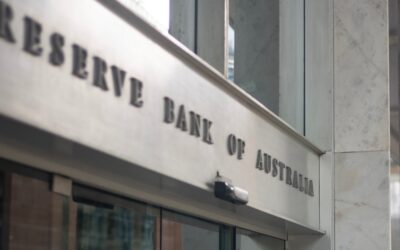In this article:

Negative gearing is an investment strategy used by more than 50% of Australian property investors each year. It offers considerable benefits when the market performs consistently but it does involve a significant investment in time and money, and has considerable tax implications. So if you’re looking to get into property investment, it’s a good idea to be clear about what negative gearing is and whether it could work for you.
What is negative gearing?
Negative gearing is simply when the cost of your assets exceeds the income from them. Technically, it’s where the interest on the amount borrowed exceeds the net income received from the investment.
Let’s say an investor borrows money to get an income-producing investment – perhaps a rental property.
If this property then earns less rental income over the financial year than the money it takes to make the mortgage repayments, maintain the property and pay any associated bills, then that property is negatively geared.
In other words, the property is operating at a loss as it is costing you more to keep it than it is generating.
How does it work?
So why would anyone invest in a property that costs more to get and keep going than any income it generates?
What makes this a successful investment strategy is that you can claim your losses back at tax time and, a few years down the track, hopefully make a profit when you sell your property at an increased price due to appreciation. Negative gearing is also often used to bring a property to the point where it becomes profitable (i.e. is ‘positively geared’).
Here’s an example:
John, an investor, purchases a rental property for $500,000 and earns $20,000 a year in rental income. However, his annual expenses for the mortgage, maintenance, and associated bills amount to $30,000. Hence, John is making a loss of $10,000 on his property which is ‘negatively geared’.
This loss can be deducted from John’s taxable income. If John’s annual income from his job is $80,000, he can declare a loss of $10,000 from his property, reducing his taxable income to $70,000. Therefore, instead of paying tax on $80,000, John is only taxed on $70,000. This effectively reduces his tax liability.
It’s important to note that the aim here is for the property to appreciate in value over time, so when it is sold, the capital gain outweighs the losses made during the negatively geared period.
Done right, your tenant, the taxation office and your own surplus cash flow can keep you going until it’s the right time to sell your property, all while taking advantage of tax benefits.
But of course, with the advantages of negative gearing come the challenges.
Negative gearing is not going to be the best strategy for everyone and it involves risks that cannot be completely controlled. Let’s break down the pros and cons a bit further.
Pros of Negative Gearing:
- Tax benefits – As mentioned earlier, you can claim your losses back at tax time. This means that the $10,000 loss in the above example can be offset against other taxable income such as salary or wages.
- Capital gains potential – When a property appreciates in value, it can lead to significant profits when you decide to sell. This can offset any initial losses and create a positive return on your investment.
- Leverage – By borrowing money to purchase an investment property, you are leveraging your money which allows you to invest in a larger asset than if you were paying cash upfront. This can potentially lead to greater returns.
Cons of Negative Gearing:
- Reduced cash flow – Negatively geared properties are not suitable for those who do not have the cash flow to accommodate the losses. You will need to be able to afford the ongoing out-of-pocket expenses and survive if rates go up. This cannot often be instantly offset by simply increasing your rent. If you’re looking for passive income or a short term investment then a negatively geared property is probably not for you.
- Capital loss – Negatively geared properties often rely heavily on profit due to capital growth over a longer period. Should the markets shift or something unexpected interrupt your investment journey there are more considerable risks of loss than with neutral or positively geared investments. Keep in mind that should you sell your investment property you will be required to pay capital gains tax which should be included in any profit/loss calculations.
- Limited serviceability – With the limited cash flow that comes with this sort of investment comes a lower limit to your borrowing capacity. This means it’s going to be harder to make further investments going forward.
Is it right for you?
It’s probably obvious by now that negative gearing combines significant financial risk with potentially significant financial gain. An investor that successfully benefits from negatively geared property probably has the following attributes:
- A stable source of income – The investor needs a stable income source that is not from the investment property so they can make mortgage repayments and meet other expenses. Negative gearing requires a reliable cash flow. An investor also needs to be able to borrow below their maximum capacity and to cope financially with potentially significant losses if markets shift unexpectedly.
- Knowledge of property markets and locations – It helps to have an awareness of property markets so that investments are in areas where property values are growing. Do your research into similar properties and potential locations.
- Reasonable expectations – It’s crucial to have a realistic outlook on potential return from your property investment. Keep in mind that external factors such as environmental changes, economic fluctuations, and legislative amendments could affect your investment.
The risks mentioned above can be magnified when there is a bigger loan on a higher value property, particularly if interest rates go up or the owner’s income falls, as it can become impossible to cover the losses if prices slump.
Make an informed decision
So, negatively gearing your property can work well when the value of the asset increases over time, due to the tax benefits that you incur while you hold the property and the potential for future profit due to the appreciation of your property.
This is a strategy that can work for many investors.
But! You will need to carefully consider your financial situation and future goals. The risks involved and the potential losses, should things change, could lead to complications. So, do your research and seek expert advice to assess whether negatively geared properties are going to be the best investment for you.



